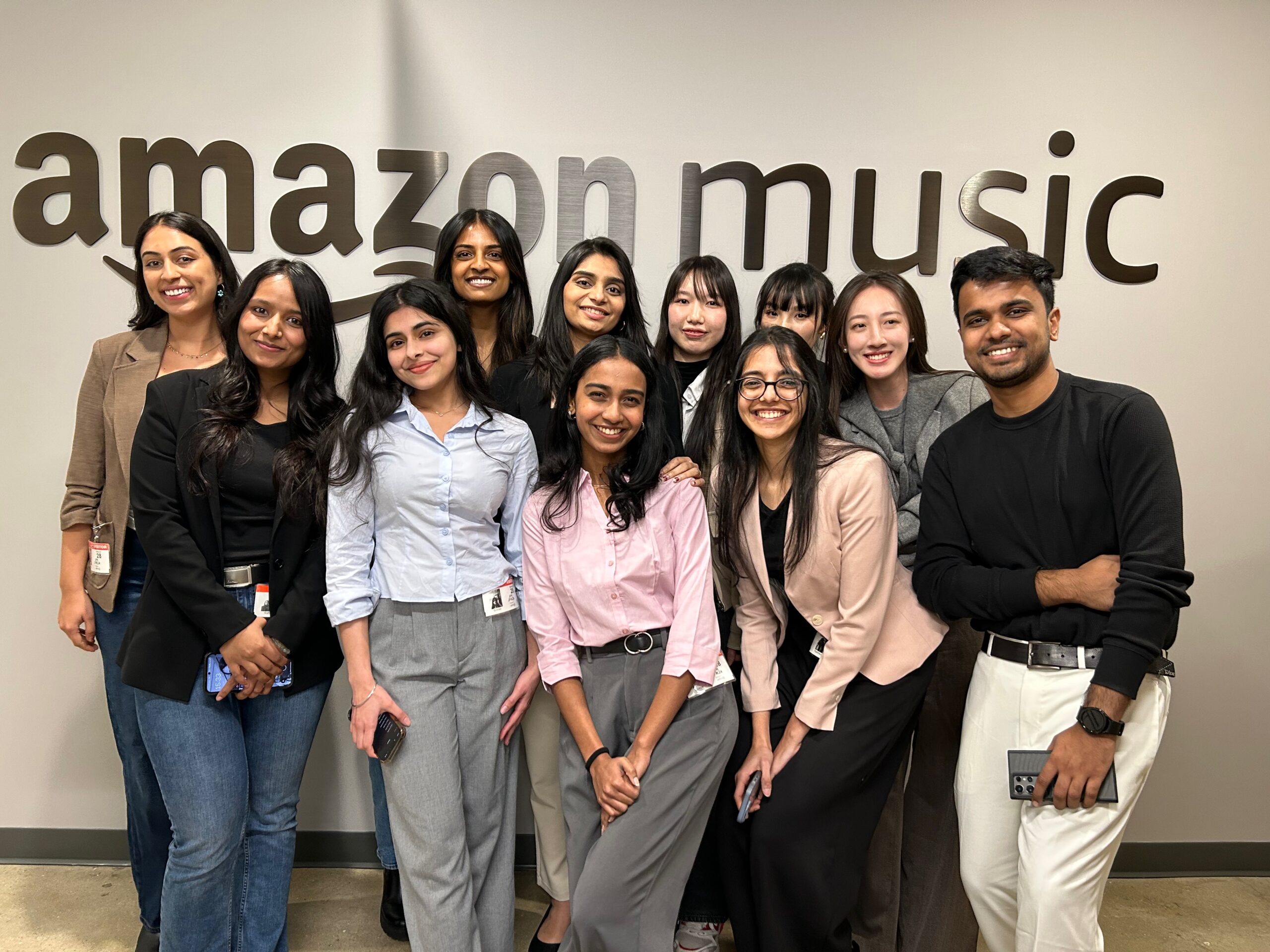From gamifying the listening experience to revamping loyalty programs, graduate students in the School of Information recently proposed innovative ways to improve Amazon Music’s user retention as part of the third annual Amazon Music Design Challenge.
The month-long challenge was an opportunity for students to work in teams on the kinds of problems they will likely encounter in their careers, while receiving insight into the structure and operations of a major company. Over four weeks, 47 students across 14 teams conducted market research, compiled data from user interviews and surveys, brainstormed ideas, met with Amazon Music mentors to workshop proposals, and produced a slide deck and prototype.
“The challenge simulates the experience of a professional product designer and prepares students for careers as user experience designers and researchers,” said Craig MacDonald, associate professor in the School of Information and co-founder and faculty director of the Center for Digital Experiences. “The area that they’re looking to go into after they graduate is very closely tied to the challenge and this allows them to be competitive in the job market.”
MacDonald manages the relationship with Amazon Music and oversees the challenge. He was joined by a panel of judges from the School of Information who reviewed and determined the winning projects: Assistant Professor Sai Shruthi Chivukula, Adjunct Assistant Professor Pamela Pavliscak, and Visiting Assistant Professor Stephanie Park.
Throughout the challenge, students used the double diamond design process to research, investigate, and pursue areas to focus on.
Manvi Tandon, Rohini Raj Rajan, Simran Kaur, and Uraiba Zafar, all MS IXD ’26, decided to focus on the social aspect of music after gathering insights from 52 surveys and interviews with music streaming app users aged 18-34, and receiving feedback and advice from their mentors at Amazon Music.
The team came up with “BeatDrop,” a unique way for artificial intelligence to mix the song suggestions of a group of people. A host creates a “vibe” for an occasion and then people can scan a QR code to add songs for an AI DJ to seamlessly blend over time. Anyone with a phone would be able to add songs to the shared playlist, creating opportunities for people who do not have Amazon Music to interact with the app and allowing people who have the app to bond with their friends more easily.


The team received the “Pitch Perfect Award” for their storytelling and depiction of the user journey.
“This was my first sprint cycle of doing a full product design from zero to one,” Tandon said. “It’s one thing to learn about it and listen to lectures, but it’s another thing to immerse yourself in a project and do it. Looking back, we made a lot of assumptions early on, and we had challenges based on external factors like time and resources, but we learned a lot and it was definitely a good experience.”
Chelsea Mai, MS IXD ’26, said that she joined the challenge to expand her design portfolio and further prepare for a career in product design.
“The mentorship was very helpful because all of us were outsiders to Amazon Music,” she said. “Though we can study it on our own, there’s only so much we can know about their business direction.”
Mai and her teammates, Charlene Guo and Chloe Zhang, both MS IXD ’26, used the double diamond method to move from nine ideas to their final concept of “Amazon BPM,” which incorporates music games into the app to reward users with benefits for engaging with music. Users can gain points by logging in, sharing music with friends, answering trivia, rating songs, and more. These points can then be cashed in for benefits like early access to a favorite artist’s new song or artist-exclusive merchandise.
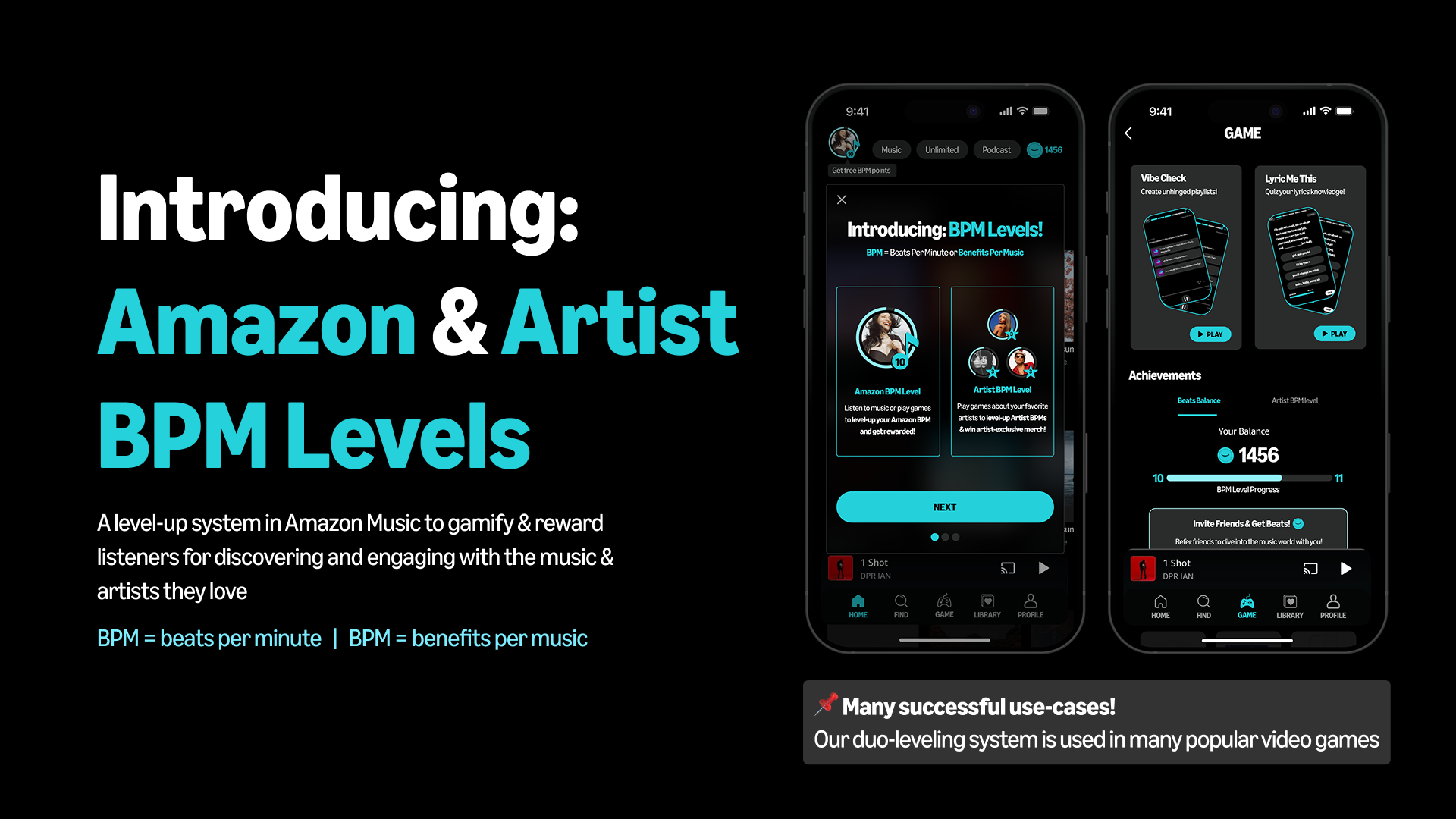
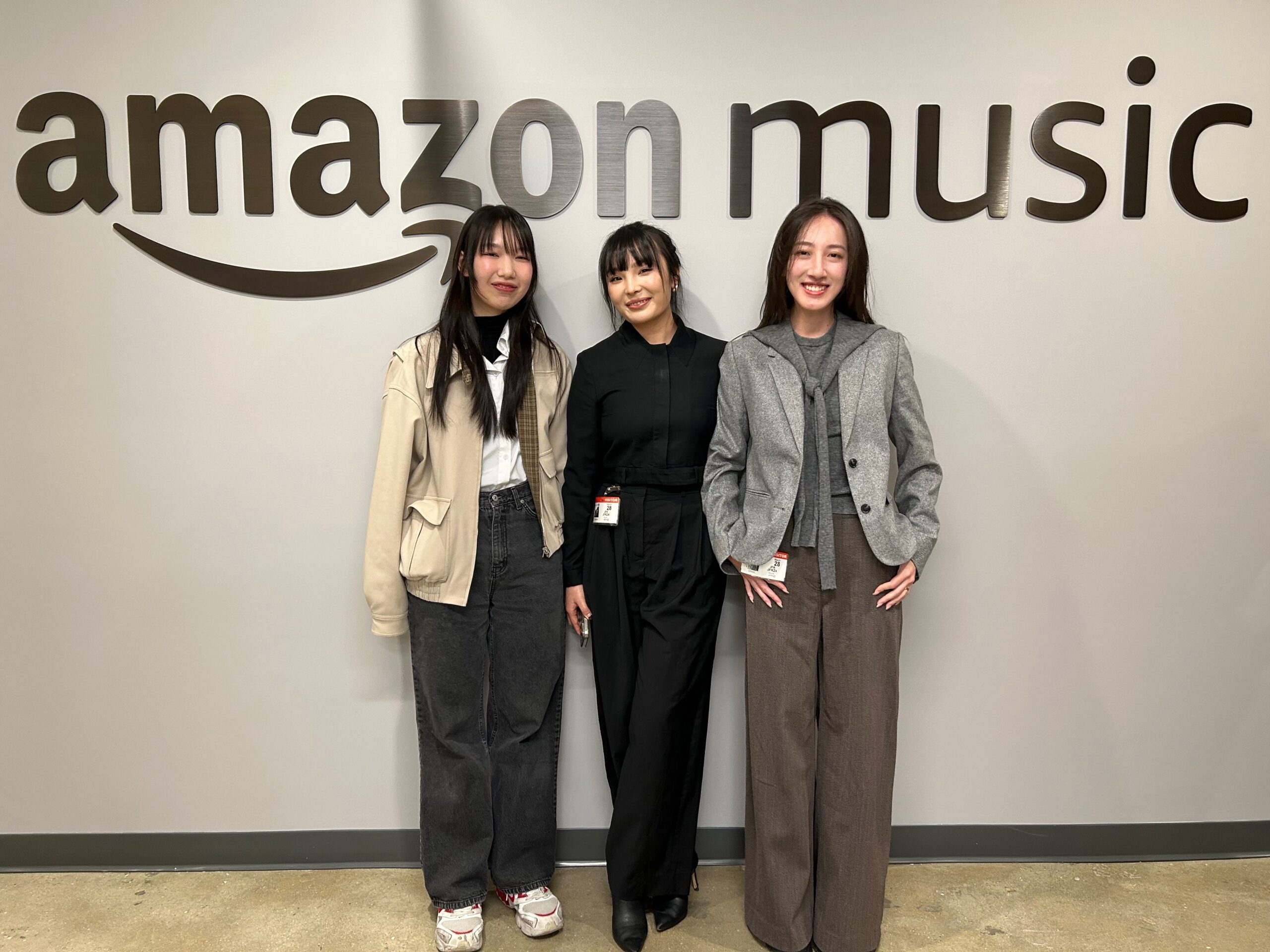
They earned the “Epic Score Design Award” for their innovative and in-depth gaming ideas.
“I would say that this challenge is one of the closest projects you can get in your student experience to creating a product or feature for a live company,” Mai said. “You’re not just creating something for Amazon Music, you’re also adhering to the brand guidelines, the way they design, and their business goals. You’re learning time management skills and how to work at a much faster pace.”
Nabhi Shah, MS IXD ’26, said survey responses and interviews revealed that the app’s algorithm was the users’ biggest pain point. Their idea, “Amazon Music Reimagined,” introduces a human touch to the process of algorithmic song recommendations. As each song plays, users can choose between multiple suggestions for the next track. This would simultaneously gamify the listening experience and refine the algorithm’s understanding of a user, ensuring that its recommendations feel more personalized over time. Further, a rewards and loyalty system would allow users to deepen their connection with music through culturally relevant activities and products like merchandise, concerts, or early access.
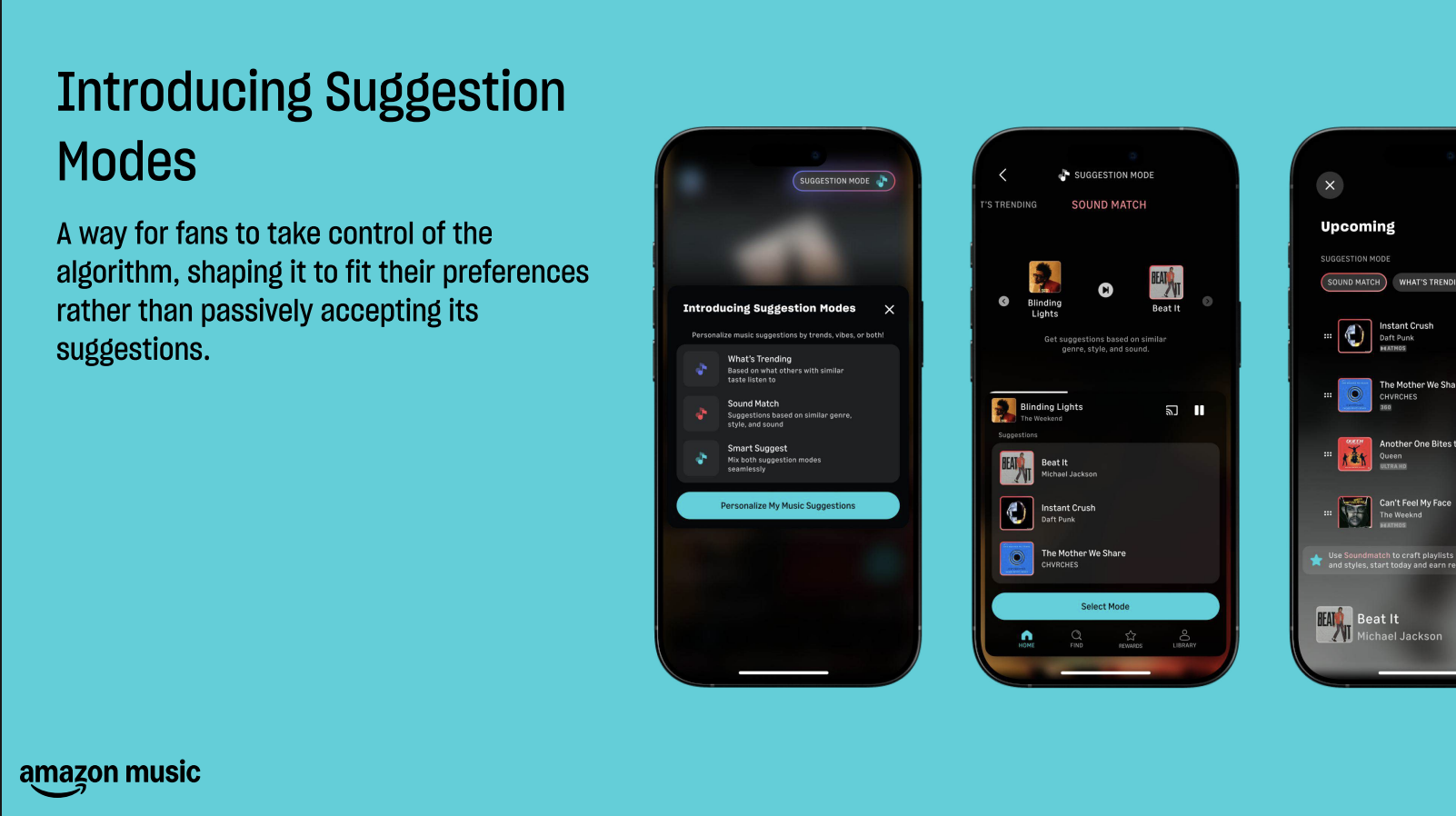
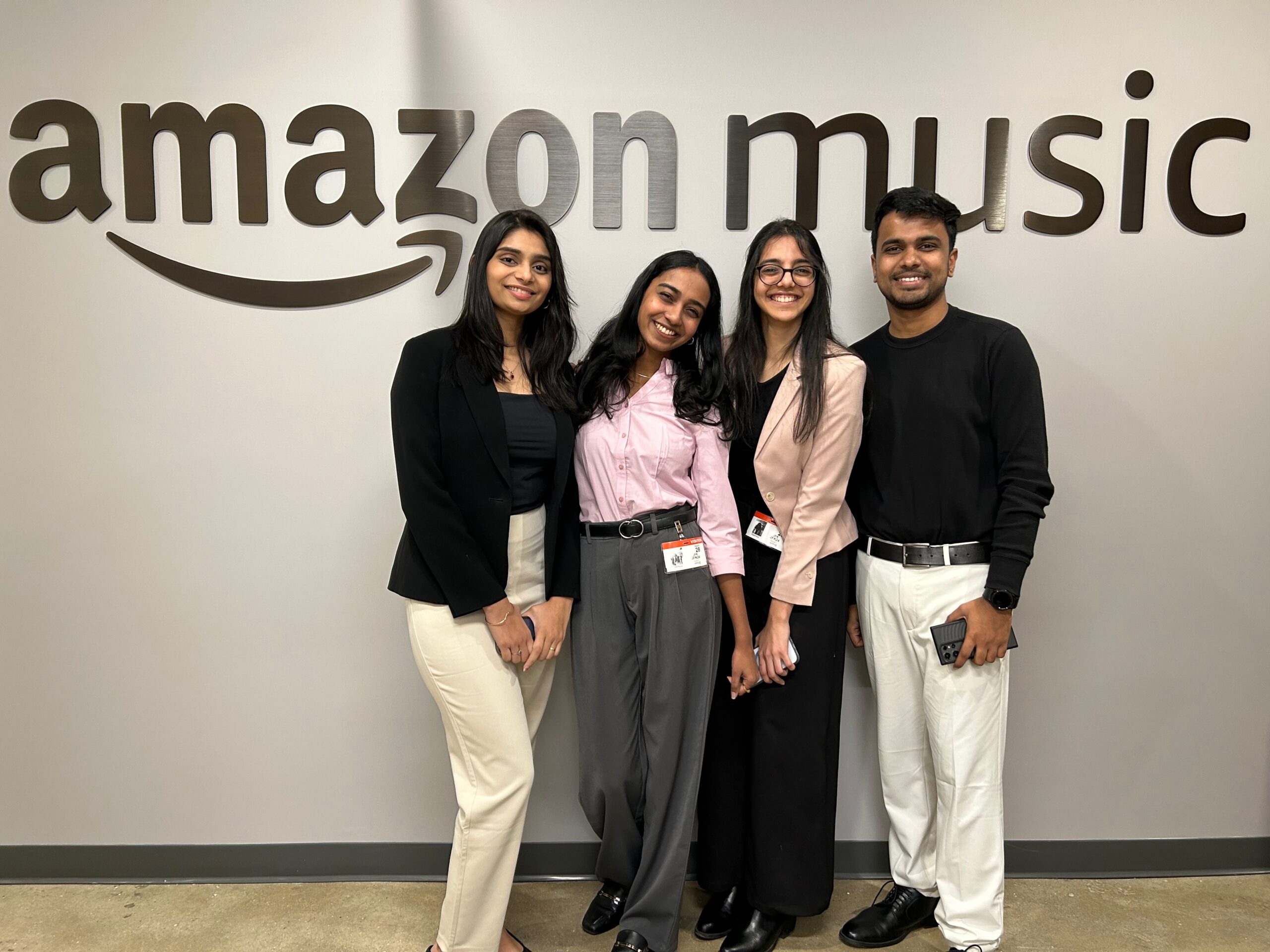
Shah worked with Radhika Balaji, Sakshi Rane, and Shreya Lohakare, all MS IXD ’26, on the project and said that the double diamond method helped them to more efficiently prioritize their ideas. The team ultimately received the “Fine-Tuned Award” for their detailing of ideas, documentation, and design thinking and Shah believes that he learned things, like how to balance the business and design sides of a project, that will help him in his career as a user experience designer.
“I want to specifically design mobile interfaces or operating systems in general,” he said. “I come from a really small town in India, and I’ve seen people use mobile phones for the first time. I really know the impact that this technology has had on lives and I also know the problems that people face while using it. I want to go out and work on this.”
The Amazon Design Challenge is part of the School of Information’s broader commitment to providing students with opportunities to work on projects for real clients. The Center for Digital Experiences, which MacDonald runs, has connected students with 251 digital projects for 151 clients, from global nonprofits like Concern Worldwide to local community arts groups like Brooklyn Children’s Theatre.
“The students who apply to the program all know about this work,” MacDonald said. “One of the reasons they’re applying is they know about the Center and want to work with it. We’re trying to do as much as we can to give students a wide variety of work experiences.”
Work from the Amazon Music Design Challenge will be on display during Pratt Shows: InfoShow25.
